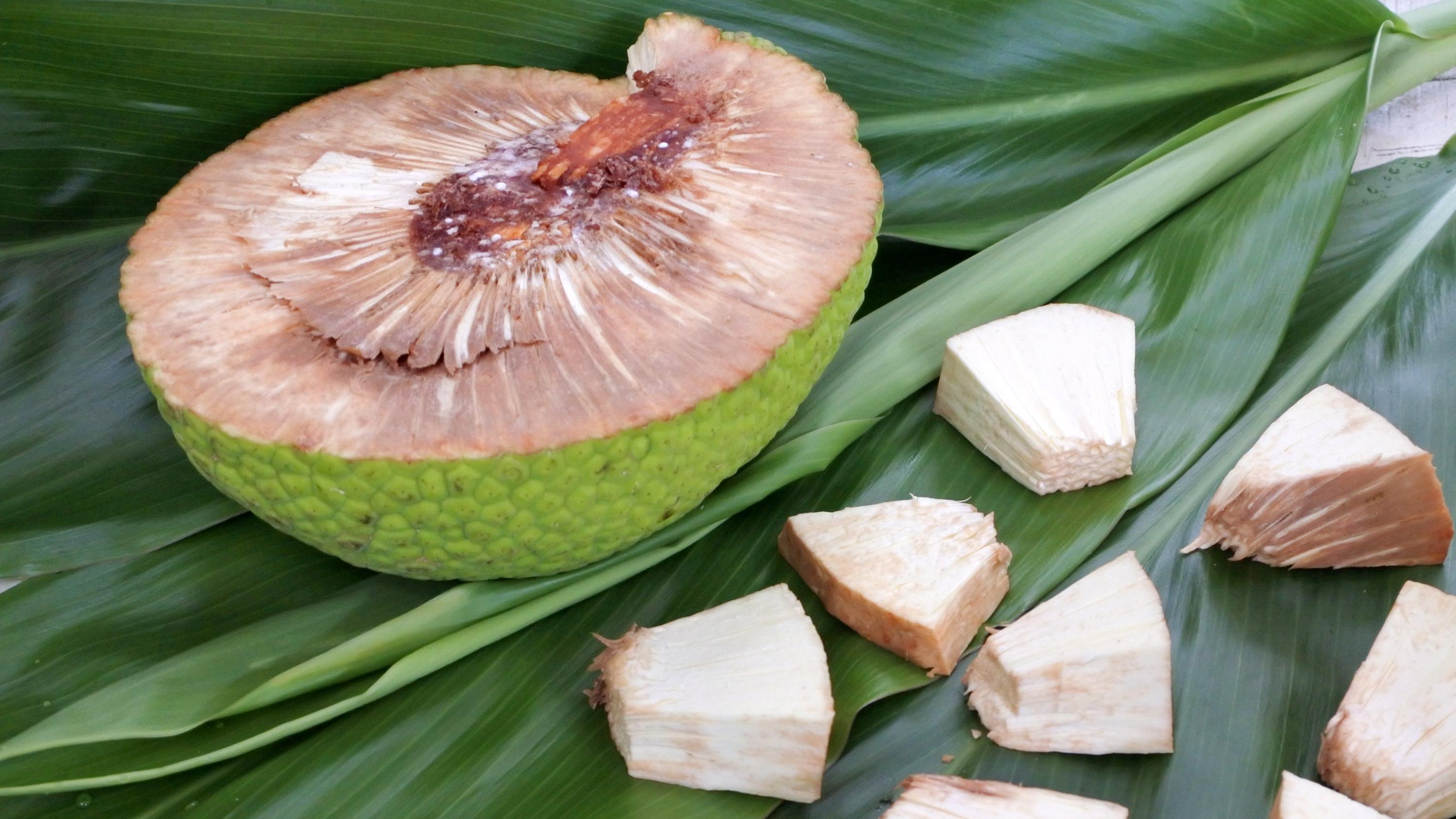The Staple Crop Of The Future
We need to stop putting all our soybeans in one basket to combat food insecurity.
For centuries we've relied on wheat, soybeans, corn, and rice as staple foods in our diet. When combating food insecurity, communities turn to these items first because they provide nutrition and energy and typically yield robust crops that can withstand multiple climates and growth conditions. But as climate change worsens, a combination of droughts, floods, storms, and increasing temperatures is threatening these important crops. According to a recent study published in PLOS Climate, we can add a new food to the roster that might sustain us in the future: breadfruit.
What is breadfruit?
Breadfruit is a more savory fruit belonging to the jackfruit family, often referred to as a "tree potato," according to Smithsonian Magazine. The fruit is believed to have originated in New Guinea and spread through Oceania, and ultimately got its name when Europeans discovered it in the 1500s and found a cooked version of the fruit to be similar in texture and smell to a loaf of bread. The fruit itself is loaded with nutrients like magnesium, potassium, phosphorus, thiamine, and niacin, and has been dubbed a "superfood." It's those dense nutrients that make it the perfect resource for those facing food insecurity.
The fruit features prominently in Grenada's national dish, oil down, a substantial stew that features island staples like callaloo and coconut milk along with breadfruit. In this dish, Rosalind Cummings-Yeates writes, the breadfruit offsets the spiciness of the other ingredients, sitting in harmony with starchy bananas and carrots. But it can also simply be prepared by roasting, steaming, or frying, the latter of which is common in Jamaican box food.
Breadfruit, which grows on trees, is desirable as a crop because it's a perennial—once it's planted and starts fruiting it can continue to do so for up to 50 years. That cuts down on labor and maintenance while also reaping the environmental rewards that longstanding trees offer the climate. Modern breadfruits are also seedless, grown instead through root propagation, so there's little threat that the plants will become an invasive species. And tests have shown the plants' resiliency: It's believed that these trees can survive up to four months in a drought, a much heartier survival rate than corn, wheat, soybeans, and rice.
This one single plant won't solve world hunger, but focusing on cultivating it in a variety of environments is a step in the right direction, toward a future in which we invest in more staple foods. As the climate continues to change, it will be important to look beyond the old standards and diversify what we consider a staple food. Regions will continue to get hotter and land is continuing to be overfarmed; focusing on long-lasting perennial crops like breadfruit, or even looking to non-traditionally farmed crops like sea vegetables, will just give us more tools to keep people fed.
